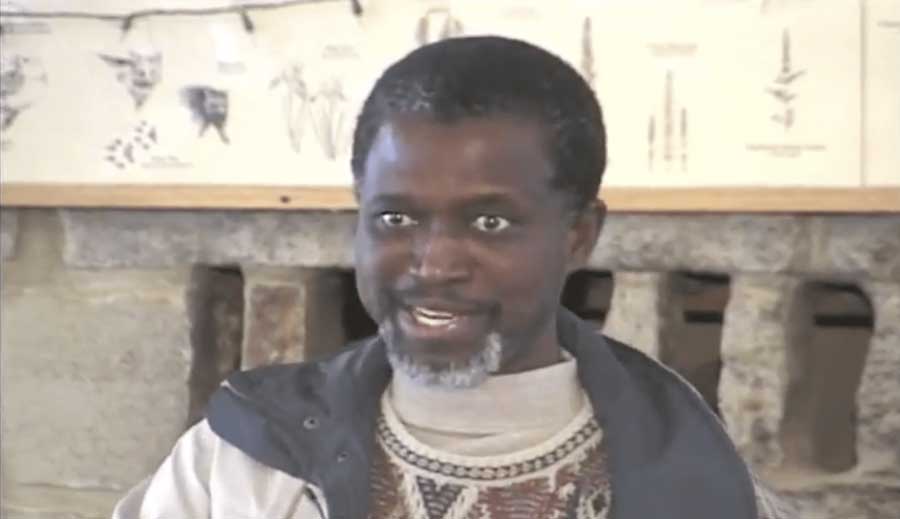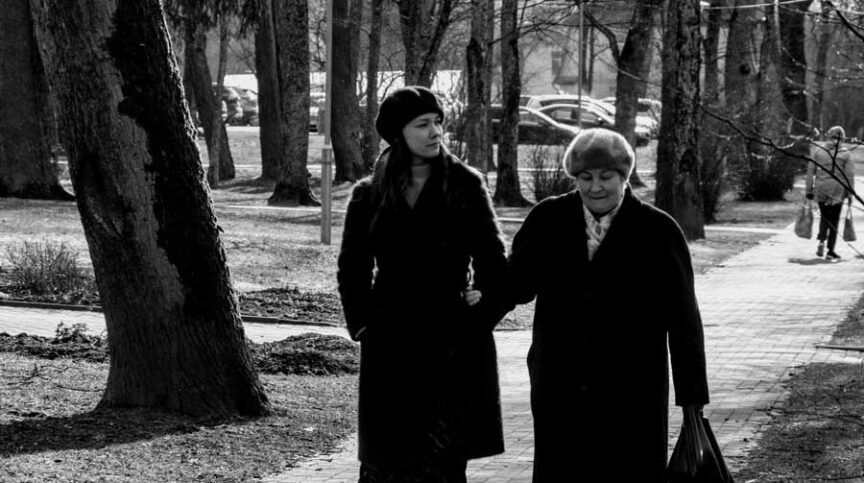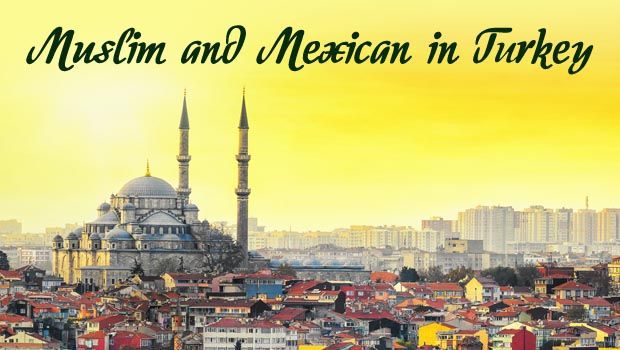Mr. Nyang is originally from the Republic of Gambia, a small country on the bulge of West Africa. He received Islamic education at an early age and was later taught by Irish Catholic nuns and fathers who introduced him to Western studies. In 1965 he came to the United States, where he received a doctorate in government from the University of Virginia. From 1972 to 1975 he taught at Howard University in Washington, D.C., serving as an assistant professor of African Studies and acting director of the African Studies and Research Program. In 1975 he left for Saudi Arabia to serve for three years as the Head of Chancery and Deputy Head of Mission of the Gambia Embassy. He returned to Howard University in 1978, and since 1986 has been serving as director of the African Studies and Research Program. He has written on African, Islamic, Middle Eastern and South Asian affairs. He is actively involved in Muslim-Christian dialogues at the local, state, federal and international levels. Together with Professor Mumtaz Ahmad, he founded and co edited the American Journal of Islamic Studies in 1984, which was later renamed The American Journal of Islamic Social Sciences.
The Message International: You are among the few scholars who are actively involved in Muslim growth studies in the West. What have you found?
Sulayman Nyang: As one of the few scholars looking at Islam in the West, I would say that my research has led me to some interesting discoveries. My initial findings were reported in my article “Islam in the United States of America: A Review of the Sources,” published in The Search (1980) and Islamic Culture (1981). In that piece I identified the main sources on the Muslim experience in the United States and traced the history of various Muslim groups. In another essay written in 1985/86 and co-authored with Prof. Ahmad, I looked at the Muslim intellectuals in the United States. Three scholars were identified as dominant figures whose scholarship was beginning to influence Muslims in the United States. They were the late Professor Fazlur Rahman, late Professor Ismail al-Faruqi and Professor Sayyed Hossein Nasr, currently at George Washington University. This second report on the Muslims traced the beginnings of Muslim intellectualism in the United States and the different approaches taken by the three leading scholars of the community. I have written several other pieces which appeared in other journals. The latest is my essay on Islam and the Afro-American community, published in the latest issue of the Islamic H01izons (Plainfield, Indiana).
My research shows that Islam is now a reality in America’s cultural and religious landscape, that the Muslim population is over three mil lion and growing, that its membership is multinational, multiethnic and multiracial. Furthermore, Muslims are now found in all walks of life: they are in the United States Space Program, at Silicon Valley, in the col leges and universities and in the heart of corporate America. To put the matter humorously, I would say we have come a long way. The Lebanese who jumped off a ship bound for the United States almost a century ago because there were no mosques in the United States, would be smiling in his grave if he were informed that former President Reagan once told the Soviets that he was coming from a country where there were churches, synagogues and mosques.
MI: Can you give us an idea of Muslim state of affairs (demographic, political, educational) in the West, especially in the United States, in 2000?
SN: With respect to the state of the Muslims in the United States by 2000, I would say that the number of Muslims will be much greater than what it is at the moment. This would be due to conversion and natural birth. Personally, I am very optimistic about the future of Islam in the country. As we move into the year 2000, we will see greater Muslim visibility in American society. Muslim names would be come more widely known and this would add to the prestige and power of the community. Politically, the diverse Muslim groups would become more conscious of the need for greater cooperation and unity. As a result of this awareness Muslims would receive more and more attention from politicians and political parties. Hopefully, the United States and other major players would join the Palestinians and Israelis in the resolution of the Middle East conflict. The settlement of that conflict would make our task in the United States easier. The Muslim community will hopefully cross this Rubicon, and many things that seem impossible today would become realities. I see a future America where talented and capable Muslims will rise to senior positions in the society.
MI: As a Muslim from Gambia and one involved in Islamic work, what picture can you draw of the Muslims in Africa? Christian missions based in the West have pumped their economic and other resources in Africa to win converts. What impact have those missions had on African Muslims?
SN: As an academic who originally came from Gambia, I would say the future of the Islamic movement in my country and Africa is of interest to me. Africa is the part of the world where Islam enjoys its highest rate of growth. This fact about Africa is not lost on those who are interested in African religions. Three points must be made about Islam in Africa. First of all, it should be borne in mind that, in spite of the limited resources available to local Muslims in individual countries of Africa, and foreign peddler of external religions has succeeded in converting many Muslims. Those who abandon Islam in Africa are usually young men and women who are attracted by the Western lifestyle of materialism and not by any religious beliefs of the Western society. Many of these may gravitate towards secular humanism or Marxism. However, it should be added that this tendency is now being reversed not only by the emergence of more active da’wah groups among Muslim youths and students at home and abroad, but also by the vigorous efforts of international Muslim organizations such as the Jama’at-e-Islami, al-Ikhwan al-Muslemoon (the Muslim Brotherhood), the Rabita al-Alam al-Islami (the Muslim World League) and Dawatul Is lamiyya (the Islamic Call Society). These different Muslim organizations have together created a flood of Islamic publications in many Muslim circles in Africa and are leaving a positive impact on the people of the continent.
MI: Will the second or third generation Muslims in the United States assimilate in the local society, or will they form a strong sub-culture within the main culture? To what extent is the assimilation good for Muslims?
SN: With regard to the possible assimilation of second and third generation Muslims into American society, I wish to state three points which I believe need greater attention of the Muslim community. The first point relates to the historical patterns of Muslim assimilation into American society. In the early days of Islam in the United States, the Muslims who came here were mainly from rural areas of the Middle East, South Asia, and Southern Europe. Because of their backgrounds, they knew little about their faith. Though most of them did not intend to spend their lives in the United States, in the end a number of factors led to their stay in the country. Those who settled permanently found the need for a mosque which would provide the religious support system for them. The ones at Ross, North Dakota; Cedar Rapids, Iowa; and Detroit, Michigan were among the earliest Arab Muslims to set up some sort of prayer structures. Those from the Punjab provinces of India and Pakistan established regular prayers for the first time at Willows, California. The South Europeans founded their places of worship in New York and New England areas. Not all these Muslims, however, survived the pressures of assimilation in the adopted society. Several of these early Muslims disappeared in the ocean of American names and faces. Soon we witnessed the Americanization of Muslim names; Muhammad became Mo, Michael or Mike; Sulayman – Saul or Solomon; Daud – David or Dave; Saeed – Sid; Ali – AI, Abubakar, Buck and Osman – Ose.
But I should add that while some of these early Muslims fell by the wayside, those who remained steadfast in their faith managed to pass the torch of Islam to their children. It was definitely not an easy task. In retrospect one should give credit to those who formed the Federation of Islamic Associations and established mosques and centers for the protection of the religion of their children. Dr. Abdo El kholy has captured the experiences of these early Muslims in his pioneering study, Arab Moslems in the United States of America. Since the 1960s, when the Muslim Students Association (MSA) came into being, the Muslims in the United States have tried desperately to shield themselves from the tentacles of what some of them called “negative assimilation, into United States society.” By negative assimilation, they mean the disappearance of average Muslims in the United States’ secular culture. To prevent such assimilation, Muslims have set up Islamic centers and mosques to cater to their international students and local members in big and small areas of the United States. The second and third generation Muslims of the 1980s and 1990s have a greater security net to protect them from the secular humanism. But while noting the greater security made possible by the vast number of local groups which can serve as support systems, we should not gloss over the fact that many dangers still lie ahead as second and third generation Muslims grapple with the challenges of American society. They need a compass of moral guidance which must be fashioned by the parents through their exemplary lives and by the leadership of the mosque, or Islamic centers through the provision of adequate moral support.





